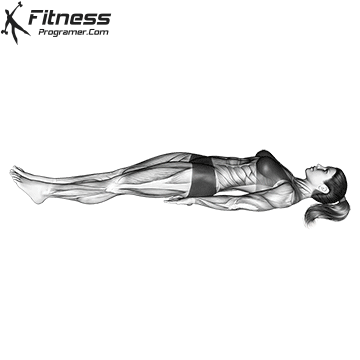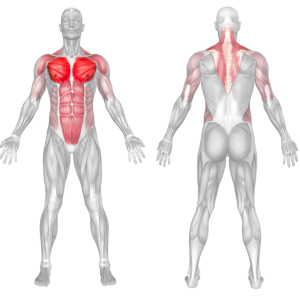Fish Pose Overview
Fish Pose is a powerful chest-opening yoga pose that stretches the spine, neck, shoulders, and chest while promoting deep breathing and relaxation. The Sanskrit name Matsyasana comes from “Matsya,” meaning fish, and “Asana,” meaning pose. It is commonly practiced in Hatha, Vinyasa, and restorative yoga routines to counteract poor posture, open the lungs, and relieve tension.
How to Perform Fish Pose

Step-by-Step Instructions
Traditional Fish Pose (Without Props)
Start in a Reclined Position:
- Lie on your back with legs extended and arms resting beside your body.
Place Hands Under Hips:
- Slide your hands palms-down underneath your buttocks for support.
- Keep your elbows close together and engaged.
Lift Your Chest:
- Press through your forearms and elbows to lift your upper chest toward the ceiling.
- Allow your head to gently drop back, with the crown lightly touching the floor.
Hold the Pose:
- Breathe deeply and hold for 15 to 30 seconds (or longer for restorative practice).
Release the Pose:
- Exhale, slowly lower your chest, and bring your head back to the mat.
- Remove your hands from under your hips and relax in Savasana.
Supported Fish Pose (Using Props)
For a restorative variation, place a yoga block or bolster under the upper back and a rolled blanket under the head for gentle support.
Tips for Proper Form
- Engage your core to prevent excessive lower back strain.
- Keep your legs active by pointing your toes or pressing them gently into the mat.
- Do not force your head backward—let it drop naturally, maintaining comfort in the neck.
- Breathe deeply to enhance the stretch and improve lung expansion.
- Modify with props if you have neck or back discomfort.
Common Mistakes to Avoid
- Overarching the lower back – Avoid excessive compression by engaging your core.
- Straining the neck – Keep weight evenly distributed across the forearms, not the head.
- Holding the breath – Maintain deep, steady breathing to enhance relaxation.
- Collapsing the shoulders – Actively lift the chest to maximize the heart-opening benefits.
Benefits of Fish Pose
1. Improves Posture and Spinal Flexibility
Fish Pose counteracts the effects of slouching, making it an excellent pose for desk workers or anyone with poor posture.
2. Opens the Chest and Expands the Lungs
This pose stretches the intercostal muscles, allowing for deeper breathing and improved lung capacity.
3. Relieves Neck and Shoulder Tension
By gently stretching the cervical spine, Fish Pose helps release stiffness in the neck and shoulders.
4. Boosts Energy and Mood
The heart-opening nature of the pose stimulates the nervous system, promoting feelings of openness, relaxation, and vitality.
5. Stimulates the Throat Chakra
In yoga philosophy, Fish Pose is associated with the Throat Chakra (Vishuddha), which supports clear communication and self-expression.
How to Incorporate Fish Pose Into Your Routine
For Beginners:
- Start with Supported Fish Pose using a yoga block or bolster.
- Hold the pose for 15-20 seconds, gradually increasing duration.
For Posture Correction:
- Practice Fish Pose daily to counteract the effects of slouching.
- Pair it with chest-opening poses like Cobra Pose or Whell Pose.
For Deep Relaxation:
- Use a bolster for a restorative variation, holding for 1-2 minutes.
- Focus on slow, deep breathing for enhanced relaxation.
For Advanced Practitioners:
- Try Lotus Fish Pose (Padma Matsyasana) by sitting in Lotus before reclining.
- Hold for up to 60 seconds, maintaining steady breath control.
Fish Pose Muscles Worked

